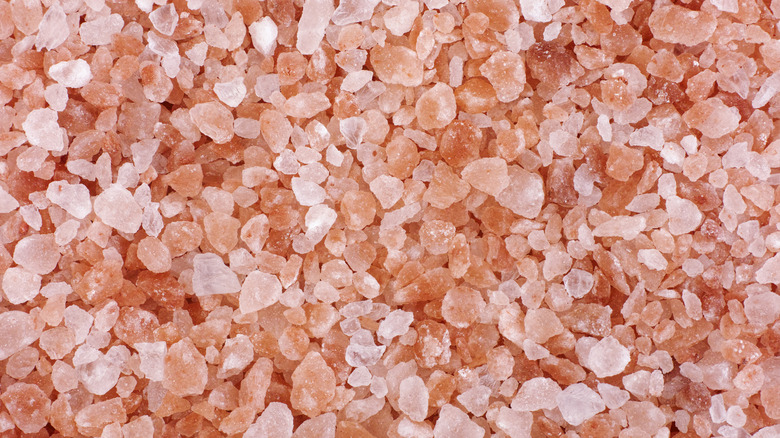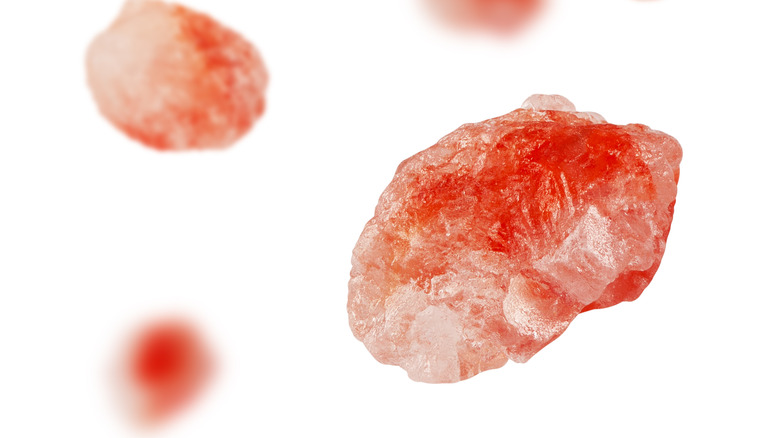Why Is Himalayan Salt Pink?
In some ways, you could say that pink Himalayan salt is the salt of the earth. In a spa, you'll find the warm and tantalizing glow of a Himalayan salt lamp supposedly exuding negative ions into the air to remove dust particles and improve people's moods, according to Time. In the kitchen, it's used tastefully to dry age a finely marbled cut of meat or used as a sophisticated garnish for a dessert. What makes pink Himalayan salt worth all the rage is in fact its beautiful hues of pink, cream, and orange layered mysteriously inside its crystalline form.
But how is pink Himalayan salt different from standard table salt? Well, as a type of unrefined salt, Himalayan salt contains a few minerals missing in refined salt or table salt. In fact, pink Himalayan salt contains potassium, magnesium, iron, and calcium, per Masterclass. Naturally, one would attribute the rosy color of pink Himalayan salt to its mineral content. But in reality, its mineral composition is only half the explanation, since many unrefined salts contain many of the same minerals. So what gives this popular type of salt its signature pink tone?
Rust
The truth behind pink Himalayan salt's hue is less glamorous than you would've imagined: rust. The iron content in Himalayan salt becomes iron oxide by a process of corrosion that occurs in the presence of water and oxygen (via How Stuff Works). Saltean explains that the iron oxide in this type of salt gives it its pink color, in the same way that iron oxide makes our blood red. This rusting process that took place in Himalayan salt beds gives this unrefined salt a special color that separates it from all other types of salts.
Does the pink hue make it nutritionally superior to other salts? Not quite: While pink Himalayan salt contains certain minerals that are absent in table salt, the amount of minerals in pink Himalayan salt is quite minuscule. Medical News Today notes that pink Himalayan salt contains the same levels of sodium as table salt: around 98% sodium chloride. So while many falsely believe that pink Himalayan salt is significantly healthier than regular table salt, the truth is that both have high levels of sodium.
Either way, you can still prefer pink Himalayan salt for its aesthetic appeal (like on a salted cocktail rim) and even the rugged texture of the granules it comes in. Maybe pink Himalayan salt isn't miraculously going to cure us of our ailments, but it'll always have its gorgeous color.

